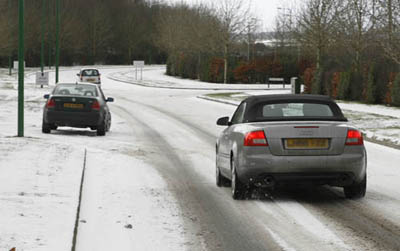The Department for Infrastructure’s winter safety service is ready to keep people moving on our roads following this week’s warning for wintry weather.
Around 300 staff and 130 gritters will be available to salt main roads to keep traffic moving safely and freely. Twelve specialist snow blowers are also available to be deployed if required. Staff are keeping a close eye on weather forecasts.

As part of the winter service, the Department salts the main through routes which carry more than 1,500 vehicles per day. In exceptional circumstances, roads with difficult topography carrying between 1,000 and 1,500 vehicles daily will also be salted. This means that 28% of the road network will be salted, directly benefiting around 80% of road users. As in previous years, arrangements are in place to enlist the help of contractors and local farmers to assist in efforts to clear blocked roads in the event of significant snow.
John Irvine, Director of Network Services, Department for Infrastructure, said: “Our winter service operation ensures that 7,000 kilometres of the road network are salted to keep traffic moving in wintry conditions. With a warning for snow and ice currently in place and some disruption on our roads likely, the Department’s winter service team is fully prepared. Farmers and contractors will be deployed as required for snow clearance.
“So far this year 86,000 tonnes of salt has been spread on our roads and a further 60,000 tonnes is stockpiled and ready for use. Five thousand salt bins and 50,000 grit piles are provided on a self-help basis on routes not included on the salting schedule.”
The Department is advising the public to be aware of weather updates as the week progresses and to consider their travel arrangements. Motorists should exercise caution and drive with due care and attention in the more challenging conditions that snow and ice can bring.
John Irvine added: “Despite our best efforts it is important to remember that we cannot guarantee ice free roads even after salting. We all need to be mindful of the changing conditions and adjust the way we drive, ride or cycle to ensure it is appropriate for the conditions. The best advice is in the Highway Code, take extra care even if roads have been salted, be prepared for road conditions changing over short distances and take care when overtaking gritters.”
Information about road conditions is available at:
Information and advice, including about driving in adverse weather conditions, can be found at:

























